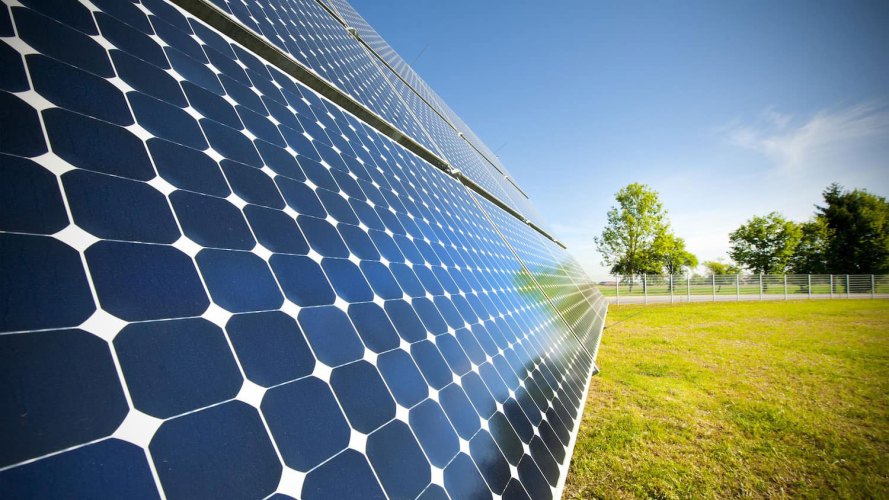Today Salesforce announced two important milestones in our ongoing sustainability journey — achieving net zero greenhouse gas emissions and delivering a carbon neutral cloud for all customers. These achievements contribute to our overall mission of creating a more sustainable future.
Climate change impacts everyone — every individual, company, city and nation. And its effects are compounded in the world’s poorest regions, amplifying global inequality. Equality is a core value at Salesforce and that’s why we’re committed to harnessing our culture of innovation to fight climate change and drive toward equality for all.
The cloud runs on electricity, which today relies predominantly on fossil fuels, a major source of global emissions. As a cloud leader, we have a responsibility to help combat the adverse effects of climate change.
Transitioning the electric grid to clean and renewable sources of energy will take time and trillions of dollars in investment. It will require collaboration, as well as regulatory changes and technology advances. Every individual, institution, government, community, and corporation has a role in the journey toward a low-carbon global economy.
The world needs action now and given the urgency of the situation, Salesforce has accelerated its timeline and has reached net zero greenhouse gas emissions. Operating as a net zero company puts an internal price on our greenhouse gas emissions, creating a financial incentive to support decisions throughout the business that reduce carbon emissions, from specifying high efficiency IT equipment to bringing about low-carbon, renewable energy to support the business.
Our path to net zero and a carbon-neutral cloud: Avoid, reduce, mitigate
Over many years Salesforce has been laying the groundwork for today’s milestones by following a three-step, iterative process: Avoid, Reduce, Mitigate. Here are examples of key activities for each step:
- Avoid emissions by placing facilities on clean energy grids.
- Reduce ongoing projects throughout our operations with investments in green office spaces and improvements to data center efficiency.
- Mitigate and offset electricity consumption for years to come by signing virtual power purchase agreements.
To further mitigate our climate impact, we’re supporting sustainable development projects through the purchase of carbon credits. Each carbon credit represents the removal/avoidance of one metric ton of carbon dioxide (or its equivalent) from the atmosphere.
We achieved net zero greenhouse gas emissions by purchasing carbon credits equal to the emissions under our operational control* which we couldn’t avoid or reduce.
We then went further, purchasing carbon credits equal to some of our indirect impacts* such as manufacturing servers, data center operations, and the impact of our customers using Salesforce on their personal devices to provide our customers with a carbon-neutral cloud.
Creating an impactful carbon offset program
To maximize environmental and social benefits, Salesforce seeks projects with 6 key attributes:
- Additional: Reduce emissions beyond a “business as usual” scenario
- Permanent: Have a lasting impact
- Verifiable: Rigorously and transparently assess impacts
- No Net Harm: Do not adversely impact local communities
- Prevent Leakage: Do not shift emissions elsewhere
- Co-Benefits: Promote equality, wellbeing, sustainable development, and create jobs in the local community
Additionally, projects go through independent third-party verification to ensure adherence to strict internationally recognized methodologies for quantifying emissions reductions, such as the Gold Standard. We are also partnering with carbon project specialists who conduct additional audits, have scale and reach, and share our core value of innovation.
One high-quality carbon credit project supported by Salesforce is Proyecto Mirador, a Cool Effect project which replaces open, wood-burning cookstoves with a more efficient alternative in Honduras, decreasing emissions and deforestation while also improving human health through better indoor air quality. Each cookstove reduces CO2 emissions by nearly 15 metric tons over its 5-year life.
To address a different global challenge, Salesforce is also supporting solar water heating in India. The project displaces fossil fuels by supplying households, universities, and commercial buildings with a more reliable, clean source of power for hot water.
Over time we will evaluate, improve and report on the impact from the carbon-reducing projects we support.
What’s next for Salesforce
Salesforce knows that businesses can be powerful platforms for change, and we are committed to doing our part. We are proud to advocate for access to renewable energy and actively collaborate with like-minded peers through industry groups such as the Renewable Energy Buyers’ Alliance and the Future of Internet Power.
Today’s announcement reflects our sense of urgency for addressing climate change and publicly upholding our environmental values. Going forward, as we continue to operate as a net zero greenhouse gas emissions company, we will also progress as quickly as possible toward our 100% renewable energy goal.
To learn more about our programs and track our progress, visit www.salesforce.com/sustainability. We hope you’ll join us on this journey.
*Emissions under operational control include Salesforce’s scope 1 and 2 emissions as defined by the Greenhouse Gas Protocol. Indirect impacts include scope 3 emissions.
Editor’s Note — October 12, 2021: This announcement of Salesforce’s net zero greenhouse gas emissions from 2017 was specific to its own business operations, not its full value chain (scope 1, 2, and 3). Go here for the 2021 news where Salesforce announces it’s a net zero company across all three scopes.




























